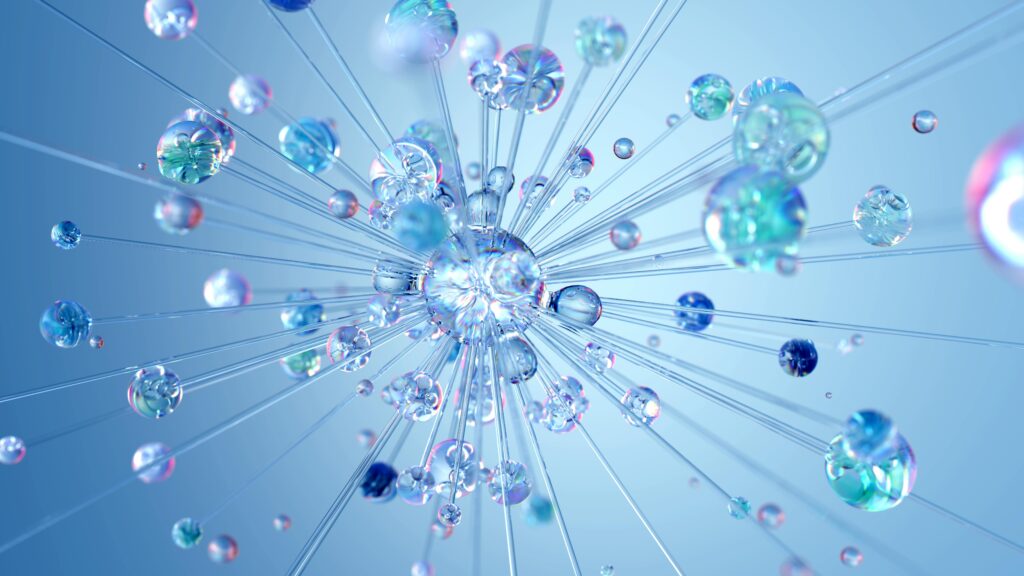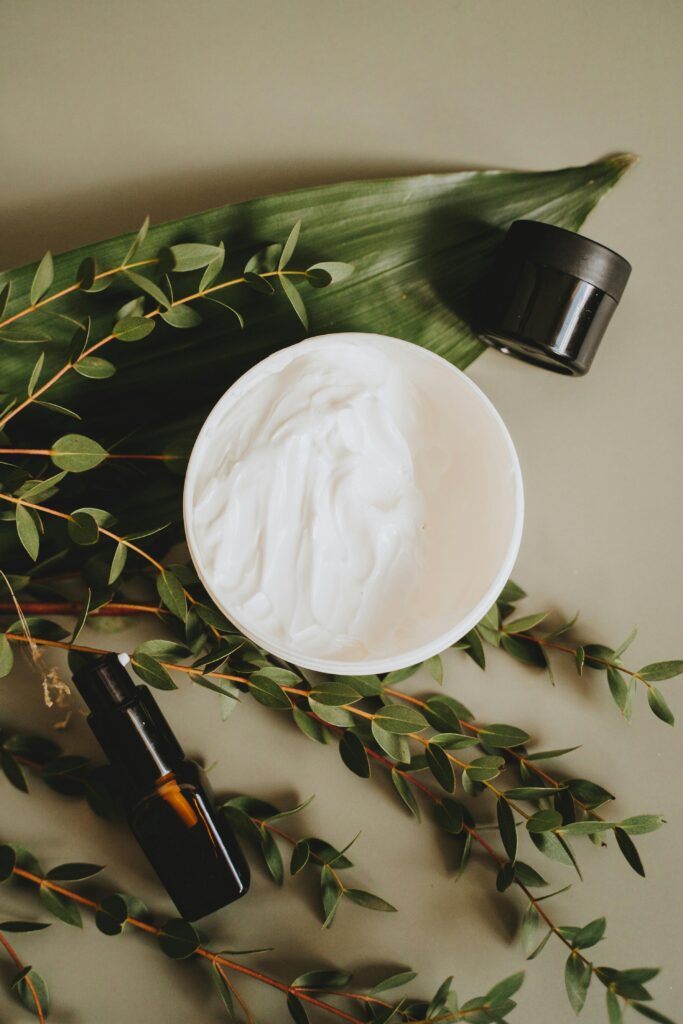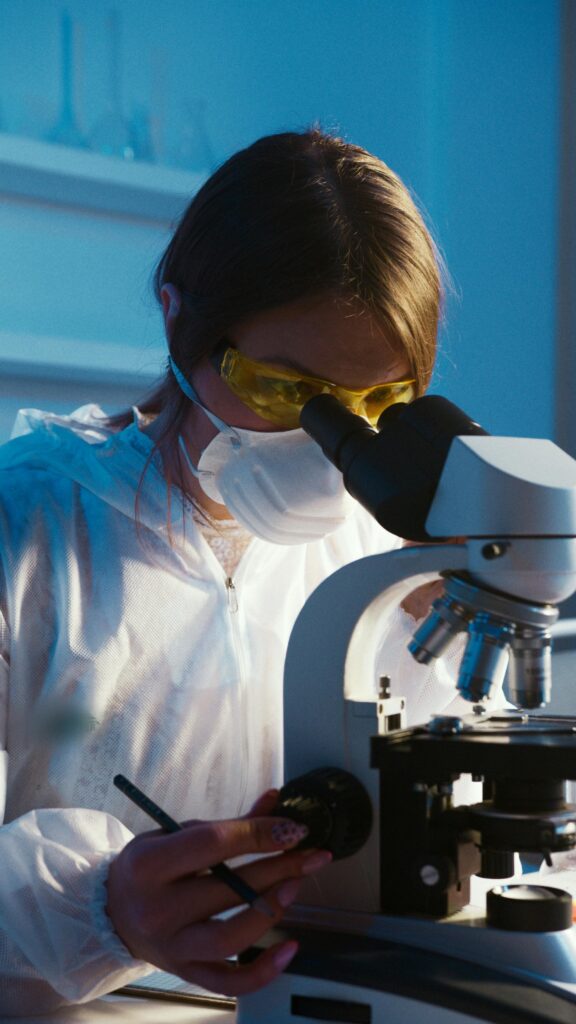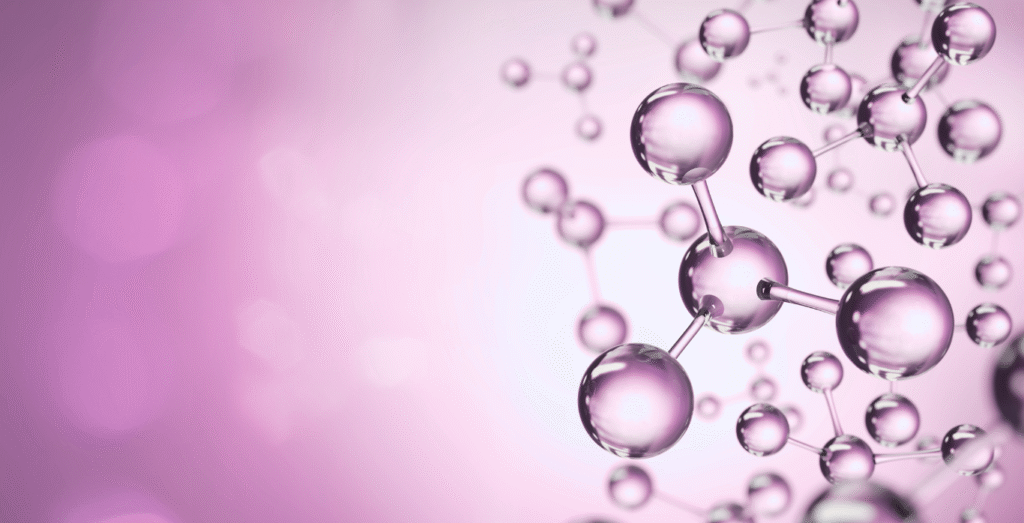Think urea in skincare is just another hydrator, like glycerine or hyaluronic acid? It’s time to look closer. While commonly used in moisturisers, urea is far more than a passive ingredient. It plays an active, biological role in your skin—affecting everything from hydration to gene expression. Found naturally in your skin’s Natural Moisturising Factor (NMF), urea doesn’t just help retain water. It also regulates skin cell turnover, repairs the barrier, and boosts antimicrobial defence.
In fact, urea is one of the most studied and underrated ingredients in dermatology. From managing chronic dryness to treating hyperkeratotic disorders like psoriasis and ichthyosis, urea has a wide range of therapeutic applications—all of which are supported by decades of research.
This post goes deep into the science of how urea works on a cellular level. Whether you’re formulating for compromised skin or just looking for a no-fluff explanation of how this NMF superstar works, we’ve got you covered.
You’ll learn:
- Why concentration matters more than you think
- What urea does inside your skin—not just on top of it
- How it stacks up against more popular ingredients
- When to use it—and when to avoid it
Let’s start with the fundamentals.
What Is Urea in Skincare, Really?
A Naturally Occurring Skin Molecule
Urea (chemical formula CH4N2O) is a small, water-soluble molecule produced in the liver as a byproduct of protein metabolism. It’s excreted via sweat and urine—and in the skin, it plays a vital role as part of the Natural Moisturising Factor (NMF). The NMF is a collection of compounds that maintain hydration in the outermost layer of skin, the stratum corneum.
According to Piquero-Casals et al., 2021, urea constitutes roughly 7% of the total NMF and is essential for skin plasticity, hydration, and barrier function. Unlike other humectants that simply draw moisture, urea also penetrates the skin and influences cellular behaviour. It supports enzymatic processes that help break down hardened proteins and release natural lipids.
How Is It Different from Other Humectants?
| Ingredient | Function | Cellular Action | Notes |
| Glycerine | Water-binding | Minimal | Good humectant, non-irritating |
| Hyaluronic Acid | Water retention (surface) | None (for common high molecular weight hyaluronic acid) | Large molecule, sits on surface |
| Urea | Hydration + more | Gene modulation, enzyme impact | Multifunctional, deeply active |

Unlike glycerin or hyaluronic acid, which mostly function at the surface level, urea interacts with skin cells. It’s hydrophilic, small enough to penetrate the skin surface, and affects both protein expression and cellular turnover.
Urea’s Concentration -Highly Dependent
Urea’s effects in skincare are highly concentration-dependent—a fact well-supported by dermatological research and clinical use.
Table: What Urea in Skincare Does at Different Strengths
| Urea % | Primary Effects | Ideal For |
| 2–10% | Hydration, barrier restoration | Mild xerosis, daily moisturization, atopic skin |
| 10–30% | Adds keratolytic effects, boosts drug delivery | Moderate eczema, scalp scaling, ichthyosis |
| 30–50% | Disrupts keratin bonds, exfoliates thick skin | Severe plaques, nail thickening, corns, keratoderma |
In practical terms:
- Under 10%: Think hydration and long-term maintenance. Perfect for dry skin, mild eczema, and prevention of flare-ups.
- 10–30%: Great for softening plaques and scaling, especially in chronic dermatoses. At this level, urea helps active ingredients penetrate more effectively.
- 30%+: High-strength formulations should be used under professional guidance or in targeted treatments. They break down keratin and work well in thickened skin or nails.
A 2020 trial by Blaak et al. confirmed that 10% urea lotion at pH 4.5 not only improved skin hydration but also lowered skin pH to optimal levels (~5.2), strengthening the acid mantle and improving enzyme activity. In Celleno’s 2022 scalp study, a 10% urea foam reduced redness, flaking, and desquamation over four weeks without irritation.
Pro Tip

Don’t assume more is better. A 5–10% urea cream can be more appropriate for sensitive or inflamed skin than a 30% formulation, which may cause stinging or over-exfoliation if misused.
Cellular-Level Actions—How Urea Rebuilds from Within
It’s Hydrating and Reprogramming Your Skin
Here’s where urea separates itself from simple moisturisers.
Gene Expression and Barrier Proteins
Urea has been shown to influence the expression of key structural proteins. According to Grether-Beck et al., 2012, urea enhances the production of:
- Filaggrin: A protein that breaks down into amino acids, contributing to NMF and pH regulation
- Loricrin: A major protein in the skin’s cornified envelope
- Transglutaminase-1: Enzyme critical for forming the skin’s outer barrier

Why does this matter?
In conditions like eczema and ichthyosis, these proteins are often under-expressed. Topical urea, especially at 5–10%, may help reverse this deficit.
Skin Immunity and Antimicrobial Defense
Piquero-Casals et al., 2021 also highlight urea’s effect on antimicrobial peptide (AMP) expression, particularly:
- Cathelicidin (LL-37)
- β-defensin-2
These AMPs are part of the skin’s innate immune system. They help control bacterial overgrowth—especially important in eczema, where Staphylococcus aureus colonization worsens inflammation.
Keratinocyte Behavior: Normalizing Turnover
Skin affected by chronic inflammation often shows abnormal keratinocyte turnover. In psoriasis, cells multiply too quickly, leading to thickened, flaky plaques. Urea slows this hyperproliferation while encouraging normal differentiation.
Hagemann & Proksch (1996) found that 10% urea reduced abnormal thickening in psoriatic skin.
What the Clinical Evidence Really Shows
The science behind urea in skincare is compelling—but how does it hold up in real-life use? Here’s how peer-reviewed studies show urea performing across different skin concerns.
Hand Eczema: High-Concentration Urea Delivers Rapid Results
In a 2022 observational trial by Celleno et al., 20 participants with chronic hand eczema used a 30% urea cream twice a day. After four weeks:
- Transepidermal Water Loss (TEWL) dropped by over 50%, meaning their skin held onto moisture better.
- Hydration levels nearly doubled, as measured by a tool called a corneometer.
- Redness and itching significantly improved by Day 15.
The product was well tolerated, even at such a high strength. That’s likely because the formula also included dimethicone and lecithin—emollients that help soften and protect the skin.

Think of TEWL as your skin “leaking” moisture. The lower the TEWL, the better your skin barrier is working—and the less irritated or dry it will feel.
Scalp Dermatoses: Foam Formulas That Actually Work
In the same 2022 study, a 10% urea foam was tested on 20 people with seborrheic dermatitis (SD) or psoriasiform dermatitis (PD) of the scalp. After 4 weeks:
- The desquamation index—a clinical scale that measures scaling—dropped by 30%.
- The area covered by flakes and scale significantly decreased.
- Participants felt less itchy and said their scalp felt calmer.
This foam included lactic acid, glycerin, and almond oil, and had a light, fast-absorbing texture.
Why this matters: Foams are easier to apply to hair than creams or ointments. That means more consistent use and better results over time—especially for people with dense or curly hair.
Atopic-Prone Skin: Strengthening the Barrier Before Flares
In a separate 2020 study (Blaak et al.), researchers applied a 10% urea lotion at pH 4.5 to people with dry or atopic-prone skin (but no active flares). After four weeks:
- Skin pH improved, moving closer to the healthy range of 4.5–5.5.
- TEWL decreased, indicating a stronger skin barrier.
- Hydration levels rose, proving the product effectively moisturized without irritation.
What’s important: These benefits were observed before flare-ups occurred. That suggests urea may be helpful in preventing skin inflammation by keeping the skin barrier resilient.
Bonus Insight: Urea Speeds Up Barrier Recovery
In the same study, tape-stripping (a method used to mimic skin injury) was used to test healing. Skin treated with 10% urea recovered faster and retained more structural proteins, meaning it rebuilt its barrier more effectively.
Benefits, Limitations, and Risk Awareness
Where Urea in Skincare Truly Excels
Urea has several proven strengths:
- Moisturises deeply by pulling water into the skin and retaining it
- Strengthens the skin barrier by increasing levels of proteins like filaggrin and loricrin
- Softens thick or scaly skin by breaking down hard keratin structures
- Enhances absorption of other treatments like steroids or antifungals
- Boosts skin’s defence system by increasing production of antimicrobial peptides.
Where Urea in Skincare Has Limitations
Like any active ingredient, urea isn’t perfect:
- High concentrations (20–50%) can sting—especially if applied to broken, raw, or freshly shaved skin.
- It doesn’t directly calm inflammation, so it’s not a replacement for anti-inflammatory medications during flare-ups.
- Its effects depend heavily on how it’s formulated—supporting ingredients matter.
When to Use Caution
- Don’t use high-strength urea on open wounds or deep cracks—it can irritate further.
- Be careful using urea near sensitive areas like the eyes or lips. Start low (2–5%) and patch test.
- First-time user? Begin with lower concentrations and build up as your skin adjusts.

Quick science note: Urea itself isn’t acidic, but at higher strengths it can still feel “active” because it breaks protein bonds in the skin. That’s what helps it exfoliate—but it also means it can tingle.
How to Choose and Use Urea Wisely
Choosing the right urea product comes down to three things: concentration, delivery format, and formulation.
Step 1: Match Urea % to the Skin Concern
| Condition | Urea % Range | What It Does |
| Dry, sensitive skin | 5–10% | Hydrates and supports skin’s natural barrier |
| After eczema flare | 5–10% | Helps restore barrier and reduce risk of future flares |
| Psoriasis, thick plaques | 20–40% | Softens scale and allows other treatments to absorb better |
| Ichthyosis, rough texture | 10–20% | Gently breaks down dead skin and supports exfoliation |
| Nail thickening, fungal nails | 40–50% | Loosens thick nail for better delivery of antifungal agents |
| Flaky scalp (SD or PD) | 10% (foam) | Hydrates, calms, and removes flakes without greasiness |
Step 2: Pick the Right Format
- Foams: Great for the scalp or hair-bearing areas
- Lotions and creams: Ideal for daily use on larger body areas
- Ointments: Best for dry, thickened areas like heels and elbows
Step 3: Check the Formula Extras
Look for:
- Emollients to seal in hydration without clogging pores
- Almond oil or lecithin to soothe and soften skin
- Lactic acid or glycolic acid (in low doses) to boost exfoliation when needed

Real-life tip: If you already use actives like retinoids or exfoliating acids, avoid layering them directly with high-strength urea. Alternate instead to avoid overwhelming your skin.
Final Thoughts: Urea as a Multitasking Workhorse
Urea is one of the few skincare ingredients that genuinely multitasks:
- It hydrates like glycerine.
- It exfoliates like an acid (but more gently).
- It rebuilds the skin barrier like ceramides.
Used correctly, it helps prevent flare-ups, accelerate healing, and improve treatment results for multiple skin concerns—from everyday dryness to chronic dermatologic conditions.
Have you tried a urea-based product in your routine? What concentration worked best for your skin type—or didn’t? Let us know in the comments, and don’t forget to subscribe for more science-first skincare breakdowns.
Talk to you soon!
Dr Bozica